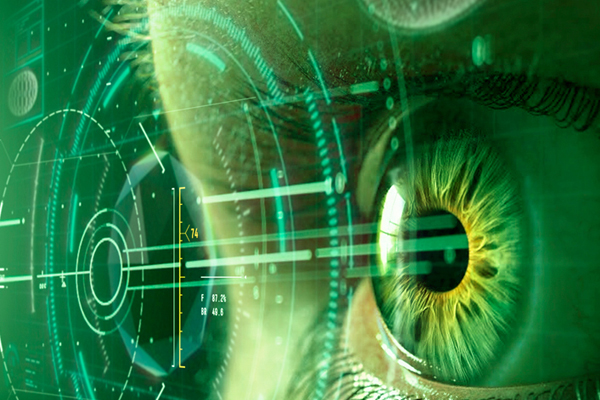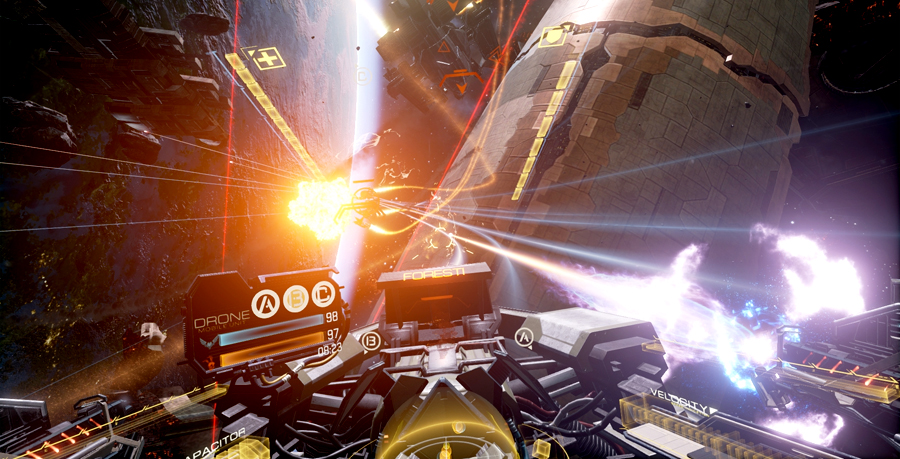Five reasons you’ll want to be ready for virtual reality

It's been a long time coming, but next-generation virtual reality has finally arrived in the form of two immensely promising head-mounted VR devices: Oculus Rift and the HTC Vive. But before you lose yourself in the breathtakingly immersive VR worlds offered with VR devices, you’ll want to make sure your PC meets the minimum requirements to deliver the performance and experience VR gaming demands.
Often times, ensuring your PC is truly ready for VR on the Oculus Rift and HTC Vive simply requires upgrading to a higher-end GPU such as the GTX 970 or above. NVIDIA GeForce’s joint programs with both the Oculus Rift and HTC Vive will also conveniently tell you if you’re ready for VR.
What's the deal with VR's exotic hardware demands, though? Here are five key reasons why your PC needs to be VR ready.

1. Latency
Your brain is a very sensitive piece of equipment, and it can pick up on the tiniest mismatch between what it expects to experience and what it's actually sensing, resulting in discomfort.
What this means is that if there's too much latency the delay between input in a VR system, everything's going to feel laggy and swimmy and you won't be able to bear it for long.
The latest VR headsets keep latency below a manageable 20ms, but that's only half the story. They also need a fast GPU to render their VR worlds at lightning speed, coupled with a good CPU and plenty of memory to ensure there aren't any bottlenecks in the process.
2. Frame rate
60fps might be the ideal frame rate for playing games on your big screen, but trial and error over the last few years has discovered that it's just not good enough for VR.
Early VR hardware prototypes suffered from motion blur due to their persistent mobile displays that didn't clear the screen between frames. This problem was solved using low-persistence OLED displays, but uncovered a new issue in the form of flickering, which in turn can give you eye-strain and a headache after prolonged use.
Both the Oculus Rift and HTC Vive run at 90fps, which eliminates flickering but also puts added demands on your GPU.

3. Two screens
On top of managing latency and running at 90fps, VR devices generate two screens at the same time, one for each eye. They are rendered from slightly different viewpoints in order to create a stereoscopic image.
Both the HTC Vive and the Oculus Rift use a single 2160x1200 display, split down the middle so that each eye has its own 1080x1200 screen. If you add up the numbers, this means that the basic demands of a VR system are roughly seven times that of a PC that can comfortably run games at 1080P and 60fps.
Of course, if you want blazing fast performance then you can opt for extra power. For example, NVIDIA's VR SLI part of its VRWorks Technologies enables you to accelerate stereo rendering by using a separate GPU for each eye.
4. Maximum detail
Many VR users have described the experience of being in a VR world as less like playing a game and more like being in an actual place. They remember VR adventures as places they've been to rather than things they've seen.
Creating this feeling of presence, however, comes with its own demands. Developers need to ensure that they don't skimp on the details. If you pick up an item in the VR world to take a close look at it, and discover that it's just a low-poly model with low-resolution textures, then the experience suffers.
Instead, everything in VR needs to be rendered at maximum detail, without any corners cut along the way. If you look through the advanced video settings on your average game and see how many of them are dialed down from maximum in order to keep the frame rate up, you'll understand just how much GPU power this is going to take.

5. Consistency
So, we have the need for low latency, high frame rates and maximum detail, and all being rendered on two screens simultaneously. But there's one final detail that's absolutely crucial for a comfortable and immersive VR experience: your PC has to do all of this with absolute consistency.
We're all used to hitting points in games when there's a lot going on at once and the frame rate briefly falls through the floor. It's annoying but we take it for granted, but VR simply can't afford to drop its game like that. The experience needs to start smooth and remain smooth.
The Oculus Rift and HTC Vive are now available to purchase. Find out if you’re ready to experience the most exciting new frontier in gaming by checking to see if your PC meets the minimum requirements to be VR ready.
By Jim McCauley
Sponsored by Nvidia
The biggest gaming news, reviews and hardware deals
Keep up to date with the most important stories and the best deals, as picked by the PC Gamer team.

